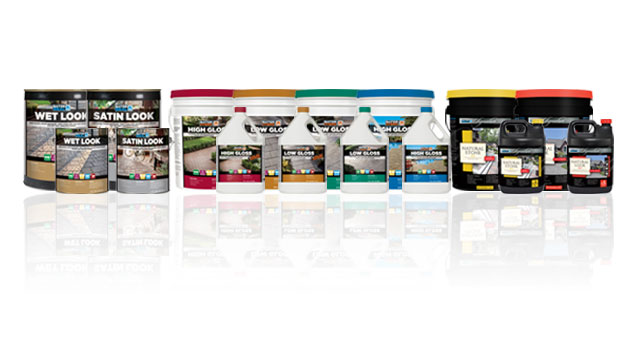FAQ : GATOR SEALERS

Alliance Rubber, Paint and Tar Remover + can be used to clean up the aYes, it can, if the competitor’s product is solvent based. Alliance Resealer can be used over any Alliance sealers, except the Natural Look. It is always recommended to test it first in an inconspicuous place, to be sure that there are no issues.
Note: A solvent sealer can be used on top of another solvent or water-based sealer. However, a water-based sealer can never be used over a solvent based. If doing a solvent based Resealer over one of the Alliance Hybrid sealers, the existing Hybrid sealer must be intact no bare spots otherwise there will be a difference in the finished look. For resealing we recommend our Resealer again always do a small test area first.glue as long as the glue has not dried.
This depends on many factors, but normally sealers last 2 to 5 years – except for our natural look product – it is guaranteed 10 years.
- Natural Look –is the longest lasting – life expectancy 10 years.
- Satin Look and Wet Look are Solvent normally the finish lasts – 3 to 5 years.
- Hybrid water based normally lasts the finish lasts 2-3 years.
- The environment dictates the amount of time that the finish lasts.
- Please note: There is no guarantee, after the containers have been opened and the sealer has been stored.
Generally solvent-based sealers tend to be harder and more durable, in terms of glossy finishes, meaning that the shine will generally last longer.
Note: Our Natural Look sealer, which is water based, has no shine, but actually protects the longest 10 years. This is a new and unique non-film forming formula.
If it resembles spilt milk, this is over application of sealer. The remedy depends on if the sealer is solvent or water based. For Solvent based use Gatorene, always do a small test area. Water based sealers do not respond well to cleaning with a solvent and will require a number of applications of solvent and vigorous scrubbing with a stiff nylon brush or a soft brass brush – again always test your procedure in a small inconspicuous spot. Bad areas may even require removing (stripping) the sealer, if so use Gator Sealer Stripper.
There are several possibilities that can cause whiteness:
- Trapped moisture.
- Too thick a layer of sealer, or multiple layers of sealer.
- Surface was too hot when applied.
- Surface was not clean at time of sealing.
- Or a combination of the above.
- The Alliance Natural Look sealer is very long lasting guaranteed for 10 years.
- Normally a sealer is reapplied in 2 to 5 years, depending if it has visibly worn. When reapplying a Sealer, it is recommended to use Gator Resealer, particularly for an existing solvent-based sealer. Gator Resealer can be used over Alliance solvent based or Alliance water-based sealers, provided the existing sealer surface does not have bare spots, or is not flaking. However, if doing so the job now becomes a solvent sealed job. Always clean the surface with Gator Efflorescence cleaner prior To sealing (or resealing) this ensures a clean surface and a good bond for the sealer. Never apply a Water-based sealer over a solvent-based sealer. If resealing a job previously done with Alliance water Based sealers, if there is no apparent finish left the area can be cleaned with Alliance efflorescence Cleaner allowed to dry and reapply the desired finish Alliance water-based sealer.
- Natural Look, the pavers retain same color and hue.
- Hybrid Low Gloss and Hybrid High Gloss will retain same color, but adds a shine like a clear coat.
- Satin Look: deepens and enhances colors, slight shine.
- Wet Look: deepens and enhances colors, high shine.
No, a sealer should only be done after the sand is installed.
Note: The use of the compacter is a necessary step in the Polymeric Sand Application. This will certainly ruin any sealed surface.
- Wait a minimum of 72 hours for the polymeric sand to dry and harden.
- Always use Gator efflorescence cleaner after the Alliance polymeric sand is dry and before sealing.
- Allow pavers to thoroughly dry after cleaning before sealing.
Note: Pavers and stone surfaces must be cool to the touch when the sealer is applied (between 60°F(15°C) and 85°F(30°C)).
Call us at 1-866-212-1611 we will be glad to assist you.
It is used on the 3rd year.
It is also used when one wants to refurbish the sealed surface without changing its aesthetic finish within a 3-year period.
For solvent-based sealer: 62°F-92°F (15°C-30°C).
For water-based sealer. 32°F and above (0°C and above).

